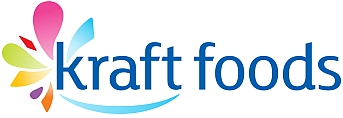On August 4, Kraft Foods Inc. announced that its Board of Directors intends to create two independent public companies: A highgrowth global snacks business with estimated revenue of approximately $32 billion and a high-margin North American grocery business with estimated revenue of approximately $16 billion. The company expects to create these companies through a tax-free spin-off of the North American grocery business to Kraft Foods shareholders.
Over the last several years, Kraft Foods has transformed its portfolio by expanding geographically and by building its presence in the fast-growing snacking category. A series of strategic acquisitions, notably of LU biscuit from Danone and of Cadbury Plc, together with the strong organic growth of its Power Brands, have made Kraft Foods the world’s leading snacks company.
Having successfully executed its transformation plan, and 18 months into the Cadbury integration, the company has, in fact, built a global snacking platform and a North American grocery business that now differ in their future strategic priorities, growth profiles and operational focus. Over the course of Kraft Foods’ strategic transformation, the Board of Directors and management have continually explored opportunities to further enhance performance and increase long-term shareholder value and believe that creating two independent public companies is the logical next step. Specifically, detailed review by the Board and management has shown that these two businesses would now benefit from being run independently of each other, rather than as part of the same company.
The company believes that creating two public companies would offer a number of opportunities:
—Each business would focus on its distinct strategic priorities, with financial targets that best fit its own markets and unique opportunities.
—Each would be able to allocate resources and deploy capital in a manner consistent with its strategic priorities in order to optimize total returns to shareholders.
—Investors would be able to value the two companies based on their particular operational and financial characteristics and thus invest accordingly.
Global snacks will consist of the current Kraft Foods Europe and Developing Markets units as well as the North American snacks and confectionery businesses. As an independent company, global snacks would have estimated revenues of approximately $32 billion and a strong growth profile across numerous fast-growing, attractive markets. Approximately 75 percent of revenues would be from snacks around the world, and approximately 42 percent would come from developing markets, including a diversified presence in numerous highly attractive emerging markets. The business would have a strong presence in the fast-growing and high-margin instant consumption channel. The non-snacks portion of the portfolio would consist primarily of powdered beverages and coffee, which have a strong growth and margin profile in developing markets and Europe. Key brands would include Oreo and LU biscuits, Cadbury and Milka chocolates, Trident gum, Jacobs coffee, and Tang powdered beverages.
The North American grocery business would consist of the current U.S. Beverages, Cheese, Convenient Meals and Grocery segments and the non-snack categories in Canada and Food Service. With approximately $16 billion in estimated revenue, this business would be one of the largest food and beverage companies in North America. Its portfolio would include many of the most popular food brands on the continent, with leadership positions in virtually every category in which it competes.
The North American grocery business would have a highly competitive retail presence, cost leadership and a continued commitment to innovation and marketing excellence. North America’s strategic priorities would be to build on its leading market positions by growing in line with its categories while maintaining a sharp focus on its cost structure. Capitalizing on the investments that the company has made during its transformation, an independent North American business would be managed to deliver reliable revenue growth; strong margins and free cash flow; and a highly competitive dividend payout. Key brands would include Kraft macaroni and cheese, Oscar Mayer meats, Philadelphia cream cheese, Maxwell House coffee, Capri Sun beverages, Jell-O desserts and Miracle Whip salad dressing.
Management is developing detailed plans for the Board’s further consideration and final approval. To execute the transaction requires further work on structure, management, governance, and other matters, which will take approximately 12 or more months. The current target is to launch the new companies before year-end 2012.
